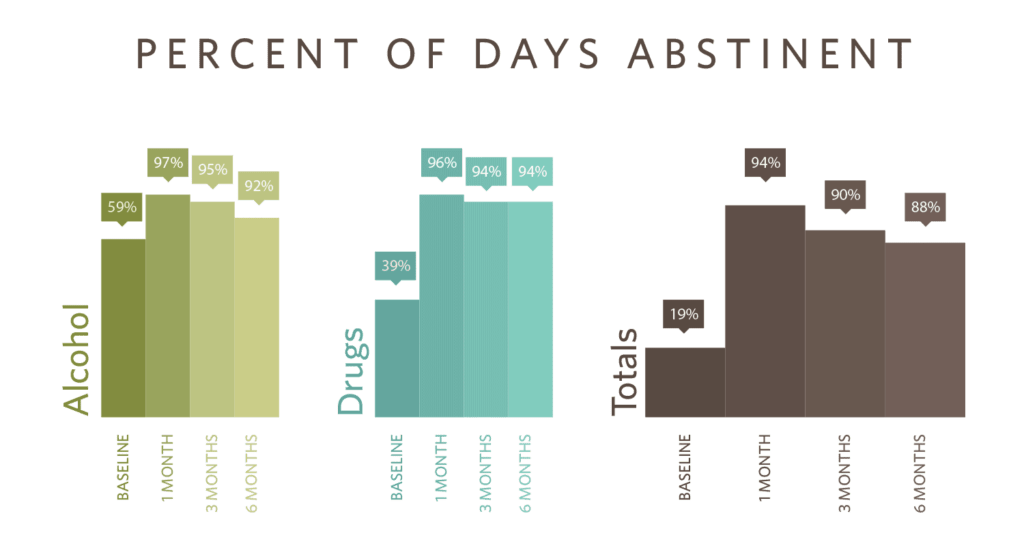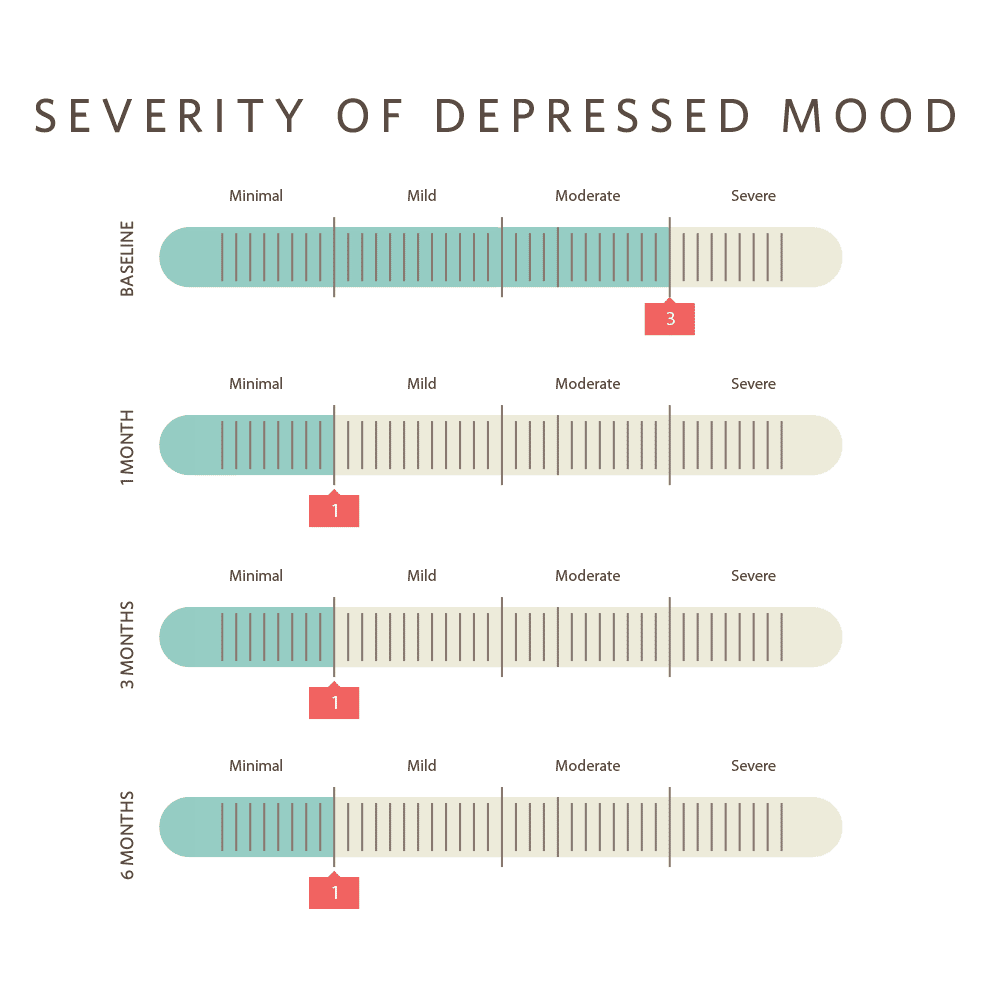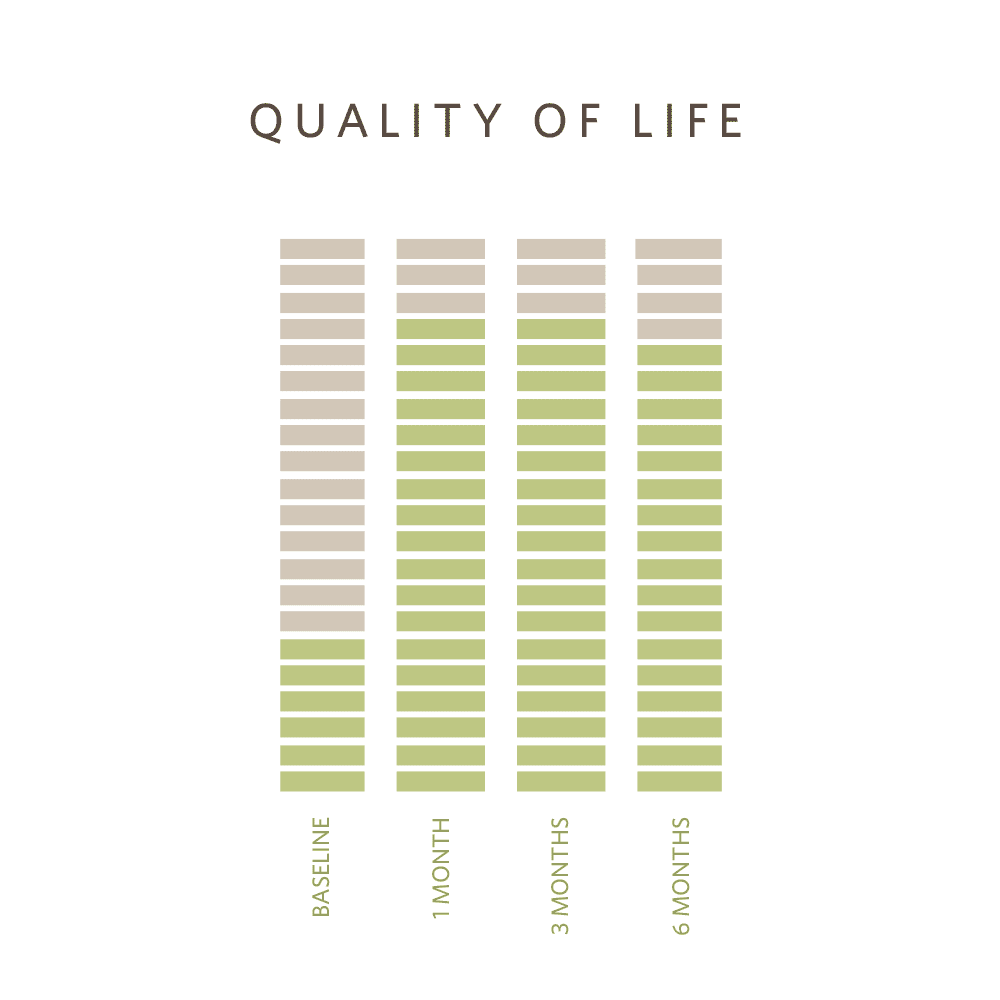
What can a person struggling with addiction expect from substance abuse treatment within the Elements Behavioral Health® family of programs? According to a long-term patient outcome study, the answer for most is significant and sustained improvement. Call 17135283709 to learn more.
The study, a joint effort of Syracuse University, the Research Institute on Addictions, and Promises Behavioral Health, followed dozens of patients from arrival in treatment and then again at one, three and six months following discharge.
At program entry, the patients were using drugs and/or alcohol four out of five days on average. One month after discharge, however, study participants were abstinent from alcohol more than 97% of the time and abstinent from other drugs close to 96%. And those numbers remained relatively stable as the study progressed. Six months later, the participants were abstaining from alcohol close to 92% of the time and from drugs more than 94% of the time.


The outcome study looked at important factors linked to relapse such as drug craving and depression. Clients consistently reported that the frequency of cravings plummeted. On admission, clients reported craving alcohol or other drugs between six to 10 times a day. With treatment this fell to less than once per day — an improvement that was maintained six months later. The strength of those cravings also diminished, plummeting from highs of “very strong” to hover between “a little bit” to “not at all” at the one- and three-month marks and to settle at just below “a little bit” at six months.


Depression is strongly linked to relapse in the first year following treatment. Clients in our programs showed marked and sustained improvements in mood during the follow-up period. Most participants rated “severity of depressed mood” as moderate for the month prior to treatment. This improved and was reported as “minimal” one month after leaving the program. And that feeling stayed relatively consistent across the next six months. Perhaps most encouraging, participants reported better quality of life, going from a rating of “pretty bad” to “pretty good” at the one-month mark — and staying there.
Outcome study participants received treatment at one of four Promises Behavioral Health® facilities — two of which provided residential treatment and two of which provided a two-day hospital program with supported housing. Call 17135283709 to learn more.
The outcome study relied on self-reporting for its data, but those results were also verified by someone close to the participant, usually a family member. This process was the focus of a second part of the study that examined the realities of evaluating addiction treatment and offered confirmation that accurate reporting can indeed be obtained. Such results can then be used to help inform and improve addiction treatment. Call 17135283709 to learn more.
The studies are presented under the following titles:
American Association for Medical Education and Research in Substance Abuse, “Integrating Program Evaluation in a Private Addictions Treatment Environment: Implications for Clinical Practice,” Clare E. Campbell1, Brenda To2, Stephen A. Maisto1, & Gerard J. Connors3 (Syracuse University1; Elements Behavioral Health2; Research Institute on Addictions3)
American Association of Addiction Psychiatry, “Conducting Systematic Program Evaluation in a Private Addictions Treatment Setting.” Clare E. Campbell1, Brenda To2, Stephen A. Maisto1, & Gerard J. Connors3 , David A. Sack2
NOTE: Outcome study results were obtained by assessing participants upon admission to treatment and at the one-month, three-month and six-month marks after treatment discharge. Data was self-reported, but a significant other was chosen by the participant to provide collateral data. The study recruited 280 patients from among four Promises Behavioral Health facilities* Clients started treatment at an acute level of care but may have progressed through partial hospitalization and intensive outpatient treatment before discharge.* A total of 68% of the initial participants were reached for assessment at the one-month mark, 61% at the three-month mark, and 60% at the six-month mark. A total of 45.7% of the original sample, 128 patients, completed each phase of the evaluation. Of the original 280 participants, collateral data was collected for 55%. Results from collateral interviews were significantly and highly correlated with patient self-reports. The study was conducted jointly by Syracuse University, the Research Institute on Addiction and Promises Behavioral Health.
*We believe the treatment facilities chosen for the study are representative of Promises Behavioral Health’s offerings and we further believe that similar results may be achievable at other programs in the Promises Behavioral Health network.
Addiction is complex and so is recovery. These results point to the efficacy of alcohol and drug treatment for many individuals; however individual result will vary and this study cannot be construed as a guarantee of future results.
![]() Written by
Written by
The Right Step Editorial Staff
Contact our Texas center today for more information on our treatment programs.
